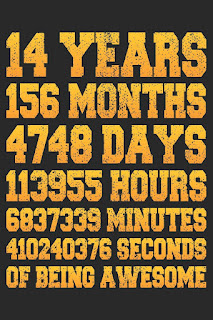Rough times for virtual worlds, great time for the 3D Web
 Carla Thornton's article Virtual Worlds: "2009 is going to be a trial by fire" points out some interesting points about these times. From the article - Virtual worlds, at least those looking for funding, are meeting the all-too-real world of the worsening economy, according to a new report. Prepared by Virtual Worlds Management, a provider of market research and events related to the virtual worlds industry, the report says investments in 63 virtual-world related companies declined by 58 percent from 2007 to 2008, shrinking from $1.4 billion to $594 million. This year will see more contraction, Joey Seiler, editor of Virtual World News, told The Standard. "2009 is going to be a trial by fire for the industry and entrepreneurs," he said. "We might see some big breakthroughs but also more layoffs and consolidations."
Carla Thornton's article Virtual Worlds: "2009 is going to be a trial by fire" points out some interesting points about these times. From the article - Virtual worlds, at least those looking for funding, are meeting the all-too-real world of the worsening economy, according to a new report. Prepared by Virtual Worlds Management, a provider of market research and events related to the virtual worlds industry, the report says investments in 63 virtual-world related companies declined by 58 percent from 2007 to 2008, shrinking from $1.4 billion to $594 million. This year will see more contraction, Joey Seiler, editor of Virtual World News, told The Standard. "2009 is going to be a trial by fire for the industry and entrepreneurs," he said. "We might see some big breakthroughs but also more layoffs and consolidations." Valuable insight from Joey who is at the source of the virtual worlds community. With the slump (dive) in the economy, companies big and small can not afford to recreate 3D assets for multiple virtual worlds or put all their bets on one platform anymore. With this year expected to be a "trial by fire", why continue to build assets in closed platform formats that may not be around at the end of the year or the next? That is like renting an apartment, furnishing it, and having to leave everything behind when you move. Those that see the need for standards, interoperability, scalability, and the "create once re-use many" concept are coming out of the closed platforms. High dollar virtual world asset construction is no longer an option in these times especially if it is going to be locked into just one place.
 Linda Holroyd, CEO of FountainBlue, put on a High Tech Entrepreneurs' Forum on the topic of Virtual Worlds: The Hype, The Reality, The In-Between at Microsoft's Mountain View campus Monday night. This was an event for those brand new to web3D, featured reps from the usual suspects (SL, IBM), and covered the 101 of virtual worlds. The panelists included Anne-Marie Roussel (Microsoft) that touched into MS's mirror world Virtual Earth, and Michael Gialis (Sun Microsystems), a fellow VWR member, who shared information about Project Wonderland and Project Darkstar. The crowd seemed engaged with a Q&A that had some interesting questions and responses. I do wish that more of the questions would have stayed on track of virtual world uses for the real world, but perhaps next time. Check out the official notes and Its All Virtual's blog covering the event. Thanks to Barry Holroyd and Linda for the invite, and I look forward to the next meeting.
Linda Holroyd, CEO of FountainBlue, put on a High Tech Entrepreneurs' Forum on the topic of Virtual Worlds: The Hype, The Reality, The In-Between at Microsoft's Mountain View campus Monday night. This was an event for those brand new to web3D, featured reps from the usual suspects (SL, IBM), and covered the 101 of virtual worlds. The panelists included Anne-Marie Roussel (Microsoft) that touched into MS's mirror world Virtual Earth, and Michael Gialis (Sun Microsystems), a fellow VWR member, who shared information about Project Wonderland and Project Darkstar. The crowd seemed engaged with a Q&A that had some interesting questions and responses. I do wish that more of the questions would have stayed on track of virtual world uses for the real world, but perhaps next time. Check out the official notes and Its All Virtual's blog covering the event. Thanks to Barry Holroyd and Linda for the invite, and I look forward to the next meeting.
Beyond those already in virtual worlds, I am seeing a growing demand by those coming from the real world to the 3D web for real-time interactive 3D applications, single and multi-user. The economy is affecting how money for web3D experiences is being spent now, not big name press releases and hype. They are bypassing the vw platforms and toll keepers to their assets. No more early adopters here, anyone with Google can quickly find hundreds, if not thousands of case studies and research papers about how this form of medium enhances everything. But the need for a standardized more robust web3D technology is a necessity when dealing with the real world, these are CAD/CAM models here, not prims after all. Not all web3D solutions for this group need an avatar. Most don't want their web3D presence to be in any second life/fantasy land but in a mirror world of our own. The virtual worlds market brings in around 1.5 billion, the real world brings in trillions. These aren't teens and tweens with allowances, these are people and businesses with real money to spend that have to do it wisely.



Comments